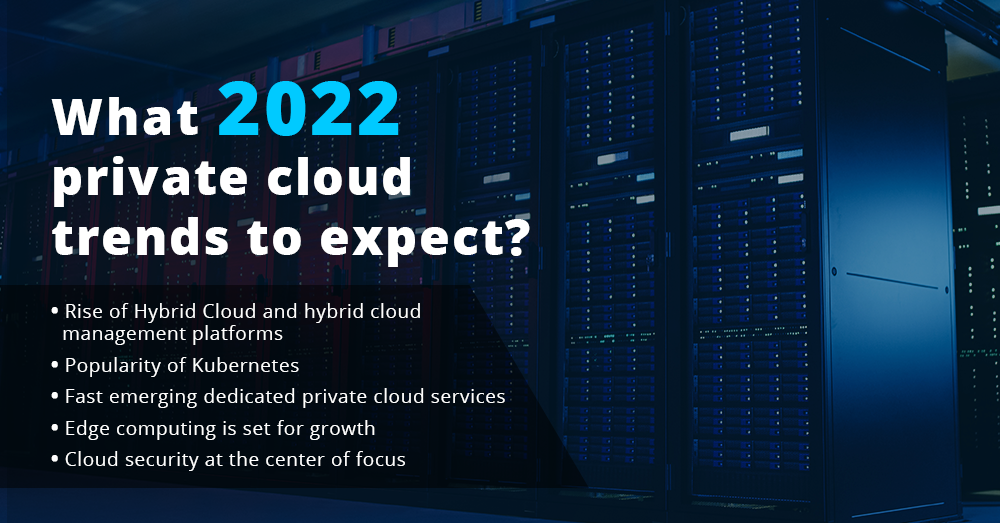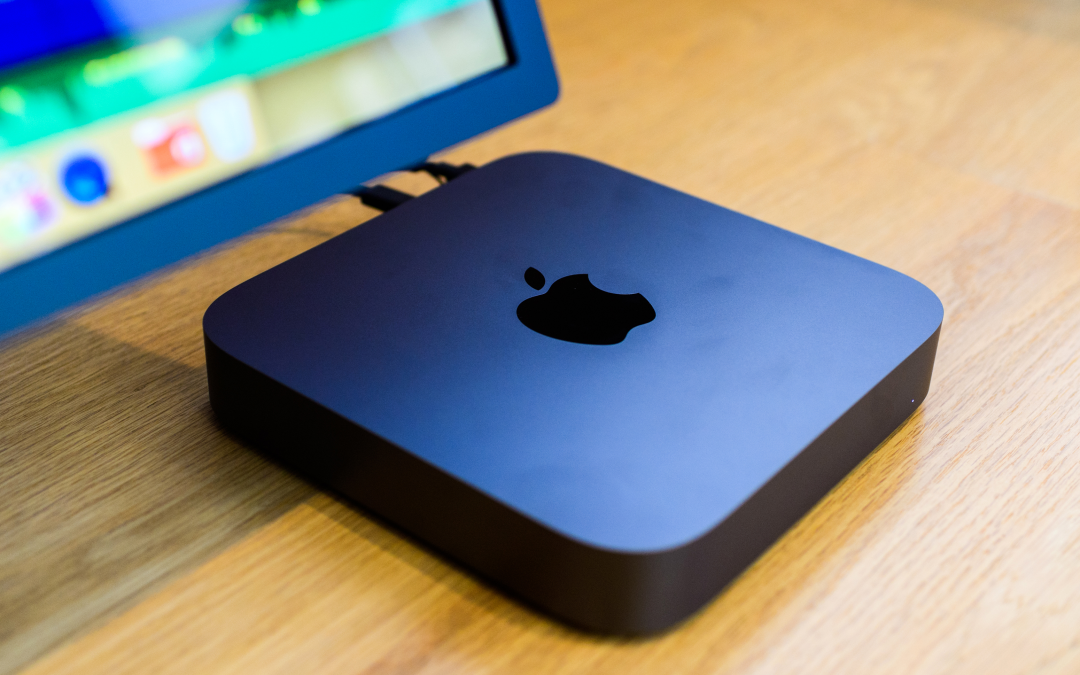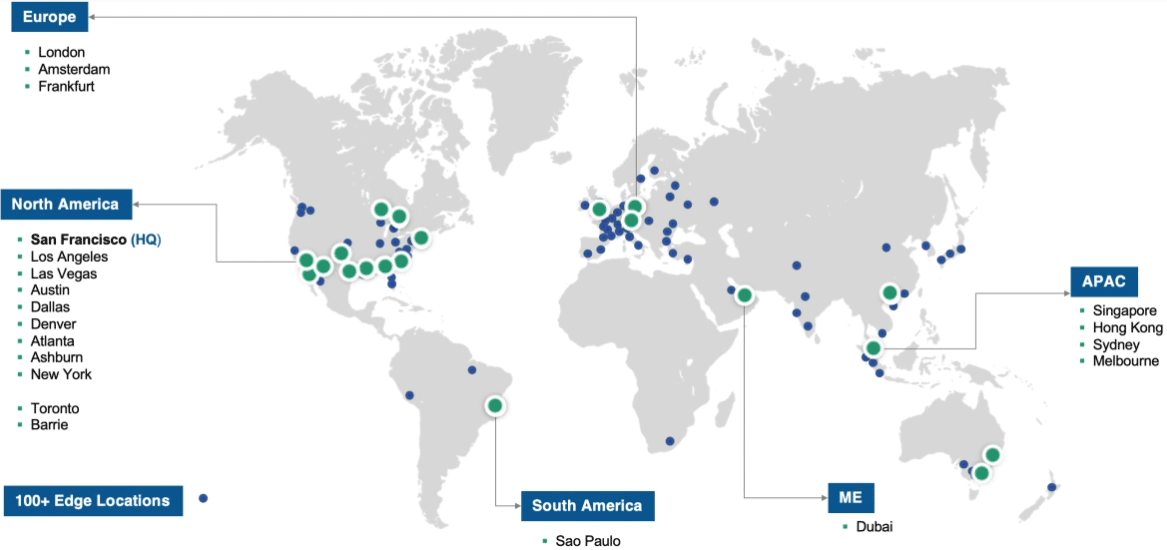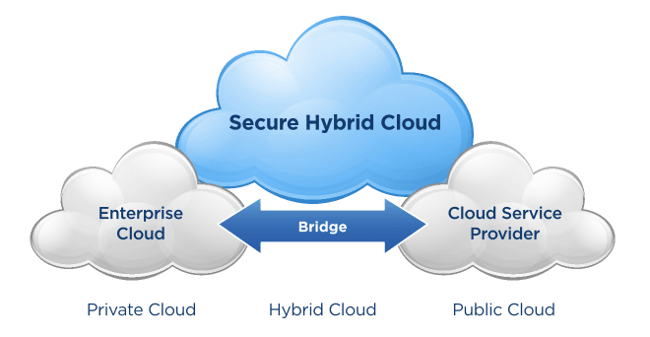
by united admin | Feb 3, 2022 | Uncategorized
A few years ago, cloud, whether public or private, solutions were buzzwords. Many technology thought leaders predicted that these would be the industry’s “next big thing”. Fast forward to the year 2020, the prediction came into fruition with businesses adopting data-driven models, remote and hybrid work environments, and global supply networks. A study states that the global private cloud solution market alone, valued at $3,703 million in 2016, is estimated to reach $14,111 million in 2023, growing at a CAGR of 21.1% from 2017 to 2023. There are similar figures for hybrid cloud management, edge computing, and public cloud, which only establishes that these solutions are seen as a critical component for companies who wish to work smarter and accomplish projects more quickly.
Most businesses have speeded up their cloud journey to enable new ways of working and developing future resilience. They’ve come a long way, but there’s still a lot of ground to cover. Cloud computing is not a one-time endeavour. It’s a lifelong commitment, similar to learning a language. Companies need to keep refining their approach to achieve excellence. Hence, there is a need for a paradigm shift from cloud migration to modernization. With that focus in mind, these are the top trends emerging this year of 2022.

– Rise of Hybrid Cloud and hybrid cloud management platforms
Cost is the key factor for many companies who are migrating to the cloud. Therefore hybrid cloud becomes the most preferable choice in terms of higher security and being cost effective to scale operations and meet higher demands. Additionally, with the rise of multi-cloud, IT infrastructures have become more complex to handle. As of now, hybrid cloud is at an early adoption stage, and organizations across all verticals are implementing it to support their remote workforce. As per a report, a rapid increase in the private cloud solution adoption is driving the hybrid cloud market. This market is only expected to touch an aggregate of $241.13 billion by 2022. It’s only logical to infer that the technical aspects require to handle hybrid cloud will lead the companies to choose various hybrid cloud management tools based on their advantages such as:
A. Aggregating services: Shows services and applications running on multiple cloud environments in one place and allows them to be managed as a single unit.
B. Managing costs: Allows users to set flexible policies for cost across cloud solutions and maximize the return on investment.
C. Self-servicing with ease: Allows users to run, consume, and terminate workloads without them having to worry about the underlying infrastructure.
D.Migrating workloads: Provides automation, fast and low-risk options for migrating workloads from private to public cloud environments and vice versa.
– Popularity of Kubernetes
The renowned container orchestration platform – Kubernetes is set to have its breakout year in 2022. Kubernetes, which was first released as an open-source project by Google in 2014 and is now managed by the Cloud Native Computing Foundation, automates several activities related to the administration and deployment of containerized applications. Developers are increasingly drawn to the platform because it enables a new approach to application development based on a microservices architecture. It is all due to the fact that K8s provide a perfect and consolidated API for deployment and containers. According to a study, which was based on responses from 3,800 people between November 2020 and February 2021, 31 percent of all backend engineers utilize Kubernetes currently, equating to almost 5.6 million developers globally. The figures emphasize that enterprises have made significant progress in adopting cloud-native technologies in public, private, and hybrid environments. Kubernetes private cloud cluster assures efficient deployment and a fully budget-friendly management cost, making it a go-to solution for this year.
– Fast emerging dedicated private cloud services
Popular cloud service providers such as UnitedPrivateCloud, Cisco Systems, Dell Inc., HP Inc, IBM Corporation, Microsoft Corporation, and others offer private cloud services such as SaaS, PaaS, and IaaS to host, manage, and operate all types of cloud services in a private deployment model. Private cloud services offer all types of users, including large and small and medium businesses, convenient access to servers, networks, and storage either on premises or on a separate infrastructure which is provided by these cloud providers. Allied Market Research’s findings state that due to the rise in ICT expenditure by governments in various developed and developing regions, such as North America, Europe, and Asia-Pacific, the global private cloud services market is predicted to grow rapidly. A report from Infoholic Research suggests that Dedicated (Private) Cloud Services, which comprises hosted private cloud services and the fast-growing Dedicated Cloud Infrastructure–as-a-Service (DCIaaS) segment, would expand at a quicker 31.0 percent CAGR in 2021, although from a considerably smaller revenue base of $5 billion. The reason behind this is simple, migrating workloads from public to private cloud solutions ensures tailored services, less risky, and better performance. An enterprise-grade private cloud such as UnitedPrivateCloud has such advantages and even more with a guaranteed 30% lower costs than the leading public clouds.
– Edge computing is set for growth
There has been an abundance of the usage of smart devices which has put a strain on internet infrastructure, leading cloud-based companies to adapt and find new avenues to serve their customers. With edge computing, storing and processing data as close to the end user, this ever expanding requirement of real-time data and localized actions are being met. In fact, edge computing is getting traction in industry 4.0. Analytics insight states that the worldwide market for this technology is estimated to reach 10.9 billion USD this year, growing at a CAGR rate of 14%. The solutions backed up with this technology can take many forms be it from mobile in a vehicle or smartphone or static as a part of a building management system, manufacturing plant, or off-shore oil rig. They can also be used as a mixture of these two dynamics to be used in hospital or other medical settings. These diverse applications make edge computing more promising and expansive.
– Cloud security at the center of focus
The last 2 decades have been all about the booming of cloud computing. A lot of innovation has happened so far along the lines of serverless pieces of technology to the evolution of cloud automated security. On the plus side, these advancements have led to companies being more agile and reducing their costs of operation. On the flip side, the cloud computing progress has also led to an increase of the attack surfaces. That’s why organizations must have the right tools and processes in place to manage and secure their data throughout their cloud journey. MarketWatch predicts that the cloud security market size is expected to grow from USD 4.09 billion in 2017 to USD 12.73 billion by 2022, at a Compound Annual Growth Rate (CAGR) of 25.5%. The report further states that factors such as increased adoption of Bring Your Own Device (BYOD) and Internet of Things (IoT0 trends, rise in adoption of cloud-based security solutions, increasing demand for cloud computing & increasing government initiatives, and emergence of smart cities are driving this exponential growth.
It goes without saying that the cloud helps employees, customers, and partners have better experiences. However, in order to achieve this, companies must foster a cloud culture in which employees welcome change and aren’t scared to try new things. The key to mastering cloud solutions in 2022 and beyond will be a cycle of continual learning, feedback, and innovation — with the correct controls in place.

by united admin | Dec 28, 2021 | Uncategorized
Revisiting UnitedLayer’s Productive 2021
We have all experienced how the Covid19 pandemic has reformed the way organizations operate and work. The rise in remote workers who use conferencing and collaborative services puts pressure on back-end support services and increases traffic on networks that link users to these services. It’s now inevitable that cloud computing is no longer a “nice-to-have” infrastructure but a “must-have” one to make businesses scalable and resilient enough to handle this increased demand. Cloud underlies and accelerates the technology adoption required to fulfill these new scale demands in industries ranging from healthcare to retail, ensuring that organizations can efficiently sustain these efforts in the future.
As a company that focuses on aiding companies to be cloud-ready, we witnessed several notable achievements. Let’s have a look at our 2021 highlights.
Our 2021 biggest achievements
UnitedLayer was felicitated as “Best Cloud-Based Data Center Solutions Provider – West Coast USA” by “Corporate Vision”, which was a massive pat on the back for our efforts going in the right direction this year. Our portfolio increased to 23 customers; we expanded our reach to 20 new data centers and over 100 edge data centers across five continents to provide colocation and private cloud access to even the remotest clients. We also introduced new products to handle the fluctuated demands and support increased requests such as those created by the COVID-19 crisis. In totality, we emerged as the go-to cloud service provider supporting transformative digital business practices and breaking new grounds to offer innovative solutions aiding customer growth, stability, and robustness.

A glimpse of our products and services
- UnitedLayer: An enterprise-grade colocation service provider that operates from 20 cloud data centers and 100+ edge data centers from 5 continents all across the globe. It delivers pre-built connectivity to AWS, Azure, GCP, OCI and over 300+ carriers. It enables customers to connect their colocation facility into a network connectivity fabric and launch public clouds across various regions to provide distributed connectivity. Its key industries include BFSI, Public Sector, Retail, TMT, Logistics, and Oil & Gas, with over 250 enterprise and government customers.
- United Private Cloud: A software-defined G3 private cloud infrastructure-as-a-service that delivers 99.999% high availability, software-defined agility, and scalability with high performance (all-flash storage ranging from 1K-100K+ IOPS on 10g/40g/100g network fabric infrastructure) and locked down security. It empowers organizations to gain performance advantages, lower costs, rapidly respond to unpredictable demand, and quickly solve data sovereignty and compliance requirements. Our G3 Private Cloud is available globally across five continents in 20 data centers. It is the underlying private cloud for many foremost Global System Integrators, serving hundreds of enterprises.
- UnityOneCloud: A SaaS based MultiCloud management platform for managing your Real Hybrid Cloud environment, data centers, power distribution units (PDUs), bare-metal servers, networking devices, private clouds (VMware, OpenStack, Hyper-V, Oracle VM), and public clouds (AWS, Azure, GCP, OCI). It provides a single pane of glass to manage a real-world hybrid cloud & MultiCloud environment with the most comprehensive DCIM (Data Center Infrastructure Management) and CMP (Cloud Management Platform) capabilities. UnityOneCloud allows customers to observe their hardware assets, overlay a heat map of assets, and perform health checks on all hardware assets. It has 800+ API connectors to allow integration with all major cloud providers globally. Users can also manage their entire infrastructure and raise a request to customize their services.
Our newest product launches and service updates
- Edge cloud launch: To combat centralized cloud computing, resulting in compromised speed and availability to the users, we launched UnitedEdge. It’s a fully Managed Edge Cloud Service that enables you to connect to your private cloud and becomes a seamless extension to your on-prem private cloud. UnitedEdge can seamlessly integrate your leading public cloud solutions like AWS, Microsoft Azure, Google Cloud Platform, and Oracle Cloud Infrastructure. It is a Software-as-a-Service Solution (SaaS) that works on Cost-effective Commodity Hardware and delivers both High-Performance Virtual Machines and Containers as a Service.
- UnitedMac cloud service launch: To help customers in their Continuous Integration (CI) with cloud Mac Mini devices, test applications on iOS stimulators and macOS instances, and remotely accessing Mac Mini devices we came up with next-gen Mac Mini cloud services. UnitedMac is an ideal platform for developing software, building cross-platform applications, and automating application testing on Mac Mini devices remotely from anywhere. It enables customers to create, collaborate and share the most secure, reliable, and scalable Mac mini cloud solution. It has highly secure and resilient high-speed network access, 24/7/365 technical support, secure & compliant data centers, and unified management of complete infrastructure.
- Oracle Unity integration: The amalgamation of Oracle cloud with our UnityOneCloud SaaS MultiCloud management and DCIM solution offers customers the flexibility to manage and monitor their OCI footprint. UnityOneCloud dashboard now has a cloud widget of Oracle to show VMs count and status, managed DB accounts, bucket counts, and HTTP monitors. It enables users to list buckets, file objects, and upload files to OCI object storage. The cost analysis module has also integrated with Oracle public cloud billing. It enables users to view the summary of their cloud usage bills, cost breakdown by service and regions, trailing twelve months cost, month to date charge, etc.
- VMware ESXi Monitoring & Management: The integration of ESXi cloud with UnityOne solution gives users the feasibility to view this private cloud’s utilization summary and offers individual ESXi host utilization with real-time data. There’s a drill-down feature available on the Summary page and Hypervisors tab that provides users the insights into this cloud’s respective Virtual Machines.
Like any other year, we continued to support the IT infrastructure via innovative cloud approaches, thereby aiding them in ‘keeping the lights on’ for organizations around the globe. However, we owe all the success to the driven and forward-thinking people behind the company who have relentlessly ideated and executed to make this year a huge success. Our future looks promising with newer roadmaps to create technological footprints.

by Parna Banerjee | Aug 26, 2021 | Private Cloud, Uncategorized
The Mac mini is exactly what it says it is: a mini Mac. It’s a compact, portable desktop computer that can transform any screen into a Mac-powered smart computer.
Apple’s computers are fantastic pieces of machinery – there is no doubt about it. But what is it about the Mac mini that makes them so popular among programmers? Read this blog and find out!
-
-
-
- Exploit mitigation: It includes mechanisms that can help protect against remote code execution or zero-day vulnerability exploits. This includes a hardware-level security mechanism known as pointer authentication, making it far more difficult for an attacker to modify pointers in memory and provides a layer of security against buffer overflow exploits.
- Vulnerability: The checkm8 vulnerability that affected the T2 is now no longer present on the M1-equipped Mac Mini. The T2 chip isn’t even present in M1 Macs. Instead, the security functionality that the T2 supported is baked into the M1.
- System Integrity: During startup, system integrity allows for a hardware-level verification of the operating system. It also continues to protect macOS authorizations in the background as it runs. This strengthens protections against sophisticated malware that tries to hijack macOS regularly.
- Security: One of the main reasons why developers don’t fancy windows is security. They don’t want their work to be hijacked over by a malicious hacker, and they certainly don’t want to hold their breath every time they’re prompted to click on a pop-up. Some of the security features of the Mac mini has been explained below:
- Cross-Platform Compatability: Working with MAC OS X allows you to run all of the major operating systems on your machine, which is a huge benefit for programmers. Running OS X on a Windows device would be difficult, and the only way to do so would be to install hacked versions of OS X. In contrast, Mac mini can efficiently run Windows and even Linux in a virtual environment. Developers can use Parallels or a similar virtualization tool to give multiple operating systems on their Mac mini if it is sufficiently equipped (it means a Mac mini should have an i7 processor, 16GB of RAM, and absolutely SSD instead of a hard drive).
For developers, this is a significant appeal. If they have a powerful Mac mini with Parallels installed, they can run Windows and Linux alongside MacOS applications, even dragging and dropping between them. This level of flexibility is unrivaled by any other operating system.
- Applications and UX: Another reason for the success of the Mac mini is its friendly and elegant user interface, as well as a large number of high-quality applications available. For instance, applications like Alfred, Amphetamine, Pocket, etc are apps that help boost the productivity of many developers.
Why did that prove to be such a game-changer?
The popularity of Apple devices among developers coincided with an era in which web development became more sophisticated, necessitating more specialized tools. The macOS X environment was poised to fulfill the need with text editors, package managers, etc. So, an increasing number of developers began to adopt macOS due to the accurate perception that they provided the most sophisticated development environment.
What are the hardware capabilities of the Mac mini?
- Running Apps on M1 Mac mini: Apple has created tools that allow developers to create Universal app binaries that run flawlessly on both Apple Silicon and Intel chips and the Rosetta 2 translation layer that enables x86 apps to run on the M1 chip.
- Apple M1 Chip: Apple has made the M1 do precisely what the company wants it to because it is a custom design. As a result, many different Mac mini components, including the GPU and the T2 security chip, have been integrated into the M1’s design.
This process of miniaturization results in greater efficiency or lower power consumption.
Power consumption is likely to be the most tangible benefit for the developers here. The new M1chips use half the power of previous Intel chips, which means double the battery life.
Ready to get your organization connected with UnitedMac?
UnitedMac provides managed & dedicated cloud Mac mini devices that can be accessed on-demand for app development and enterprise builds. Get services from our most secure and resilient cloud data centers in San Francisco, USA, and Amsterdam, Netherlands.
Visit our website to know more!

by Parna Banerjee | Jul 16, 2021 | Uncategorized
What are the cloud trends to look out for in 2021? With the pandemic’s onset in 2020, the business world has seen a significant shift to cloud-centric digital infrastructure. While incorporating digitalization into IT assets, businesses optimize cloud technology for sophistication, scalability, and security.
Beyond the well-known cloud benefits, the coming years will shed light on capabilities such as seamless collaboration, hybrid cloud power, service provider potential, and practical applications for IoT, AI, Blockchain, and other technologies.
We’ve created a comprehensive list of cloud trends for 2021 and beyond to help you get the most of this technology.
1. Multi and Hybrid Cloud Environments:
The first cloud trend to look out for is multi and hybrid cloud environments. Businesses recognize that cloud data management isn’t about having a single cloud platform or infrastructure; it’s about selecting the best solution for the job. It could be on-premises or even legacy systems in some circumstances, especially if businesses are bound into specific systems for business-critical solutions that are tedious or complex to adapt.
More organizations will develop cloud-native applications in the future, with little to no architecture relying on a single cloud provider. Organizations will learn to grow with more clarity than before by cultivating a deeper understanding of their cloud needs and the cloud industry. However, this paradigm change depends on the development of cloud capabilities, as time-to-market is improving rapidly and the ability to incorporate changing workloads allows enterprises to capitalize on even minor trends.
According to Global Channel Chief at Google, Carolee Gearhart, “Gartner is estimating that by 2021, 75 percent of midsize and large organizations will have adopted multi-cloud or a hybrid strategy.” IDC affirms this in their 2021 report, stating that by 2022, over 90% of enterprises will be relying on a hybrid cloud solutions model that includes on-prem, dedicated private clouds, multiple public clouds, AND legacy platforms.
2. Hybrid cloud:
A hybrid cloud approach categorically focuses on taking advantage of both the private and public cloud. In contrast, a multi-cloud strategy leverages the differing allowances of different providers—regardless of public or private cloud.
Businesses can get the best of both worlds with a well-balanced hybrid strategy. They may scale further and faster due to the public cloud’s creative and adaptable services without sacrificing the higher cost efficiency, faster response time, and regulatory compliance with the private cloud’s advantages.
3. Software as a Service (SaaS):
One of the first and most successful ‘as a service’ cloud services is Software as a Service (SaaS). It includes all internet services and software provided by a third party in exchange for subscriptions and licensing fees. SaaS now adds $20 billion to software manufacturers’ quarterly revenues as one of the biggest cloud application offerings. Each year, the number is predicted to increase by 32%.
Competition between SaaS companies has resulted in a wide range of low-cost solutions, ensuring that public cloud services will continue to dominate the industry for years to come.
4. Infrastructure as a Service (IaaS)
Infrastructure as a Service (IaaS) has been since the dawn of cloud computing, but its full potential has yet to be realized. Because of a documented talent gap in the cloud migration process, businesses have been slow to adopt this technology. This up-and-coming cloud solution is predicted to eventually overtake SaaS in revenue, thanks to increased cloud education and understanding borne of necessity.
Pay-as-you-go services for storage, networking, and virtualization are referred to as IaaS. Many businesses have taken the path of least resistance when it comes to cloud migration, opting for a ‘lift and shift’ approach rather than altering their workflows to make the most of the cloud. Organizations have learned that to compete, they must modernize processes, invest in cloud-native development, and refactor apps to achieve proper cloud optimization.
5. Cloud monitoring:
Cloud coalitions, machine learning, and data fabrics allow the cloud industry to fine-tune one of its most essential components: monitoring. Companies are now faced with the problem of consolidating metrics on their numerous cloud servers to provide monetizable insights, as they face pressure to transfer workloads to the cloud quickly. Between 2020 and 2026, the cloud monitoring industry is expected to increase at a rate of 22.7 percent annually, valuing the industry at $4.5 billion.
How can we help you?
Getting the most out of your cloud services requires a commitment to change and agility. These many tendencies are native to the cloud, and they will continue to evolve at a quicker rate as cloud adoption grows and the cloud is tuned to give clearer insights.
By leveraging the expertise and knowledge of the industry, tracking and analyzing these trends will help your company open doors. As the world embraces cloud services, these doors will become increasingly important for long-term growth in 2021 and beyond.
We’ll update these trends up to current as of the industry changes, ensuring that you’ll never be alone in this huge digital landscape of highly diverse architectures. The cloud is the way of the future. When you’re ready to take flight, contact us!
by united admin | Oct 15, 2020 | Colocation, Uncategorized
If you are looking into using a managed service provider’s support, you already know how it would work for your company. Maybe your company has expanded a lot lately, or you’re thinking about starting a company, and you want to make sure you get started on the right foot. We often see large colocation data centers pushing the fact that you can choose their facility rather than the customized service, scalability, or advanced functionality it can offer based on its proximity to your office.
Although all data centers offer some degree of technical support, select data centers add substantial value to the services they provide. They hire a team of highly qualified engineers who carry on additional duties to fulfill their customers’ individual needs better. It involves the resolution of IT problems related to your infrastructure that your IT workers will usually manage. A remote hands support data center helps you to concentrate your internal Information Technology team on unique in-house tasks while the engineers handle the issues related to your equipment and network in their data center. This ability to use the “remote hands” of the data center brings conventional IT help to a whole new level and should be a vital part of your strategy.

UnitedLayer’s Remote Hands service provides access to a team of highly trained, in-house, licensed 24x7x365 technicians who can remotely control servers via a single glass pane known as UnityOneCloud. By building a library of information about the equipment, rack installation, cabling, and wiring of cross-connect termination solutions, shipping, and receiving for data center equipment/inventory boxes, we also provide a detailed cage and cabinet audit with Inventory Audit. Our highly trained and experienced rack installers for the data center racking and stacking of equipment.
UnitedLayer offers receiving and delivery facilities for data center equipment/inventory boxes, ensuring the protection of equipment or shipments for customers. We provide cabling and wiring services in global data centers, including cross-connect termination solutions, along with transferring, securing, or dressing existing cables in the data center.
The remote hands of a data center are helping hands when and where you need them. It should be at the forefront of your overall IT plan, from tackling daily tasks to rapidly unraveling a crisis. You can have peace of mind knowing that while UnitedLayer Colocation keeps a watchful eye on your network, you can focus on strategic in-house ventures.
Visit our website www.unitedlayer.com to learn more about our Remote Hands services.

by united admin | May 14, 2020 | Uncategorized
In the fast-growing tech world, organizations are continuously trying to find new ways to increase the profit margin of their business. Organizations have eyes on various emerging technologies, which include Artificial Intelligence, Machine Learning, Blockchain, Internet of Things (IoT). One of the most emerging technologies is cloud computing that has provided sustainable results with great potential in a cost-effective manner.
According to a leading market research firm, the global cloud market is expected to grow from 23.7 Billion USD in 2019 and is projected to grow by 73.4 Billion USD in 2024, growing at a CAGR (Compound Annual Growth Rate) of 25.4% during the forecast period. On the other hand, the global market size of the hybrid cloud market is found to have a value of 44.6 Billion USD in 2018. It is expected to grow at USD 97.6 Billion by 2023, registering a CAGR of 17.0%, during the forecast period.
What is Hybrid Cloud & Hybrid Hosting?
Hybrid cloud refers to the mixed computing, storage, and services environment made up of on-premises infrastructure, private cloud services, and public cloud services. Hybrid cloud hosting is the model that allows the organization to implement servers, storage, and dedicated cloud servers on the same network. It is the model that utilizes the public and private cloud hosting tools and techniques to provide a cloud hosting environment to the client. Hybrid cloud hosting is important for many organizations as they are performing complex infrastructure and require multiple IT platforms due to legacy applications, special IT attributes, heavy traffic spikes, and regular mandates.
On 5 May, 2019, according to major research & advisory firm “Hybrid architecture will become the footprint that enables the organization to extend beyond their data centers and into cloud services”
How to Leverage Hybrid Cloud Infrastructure For a Positive Business Outcome
Organizations are leveraging strategic advantages and benefits offered by the hybrid cloud, and they are increasingly moving towards it as it offers the features of both public cloud as well as hybrid cloud. Dedicated servers are a great fit for many workloads. It is great for running i/o- intensive applications with predictable workloads like databases or mission-critical business applications. Potential inferences are being drawn by several organizations and are trying to make beneficial use from it.
For instance, IBM is helping the state of Ohio to consolidate and modernize all the departmental data centers into computing centers which will integrate and build thousands of applications. It is making use of a shared private cloud which is costing a loss lesser than its existing infrastructure.
“Hybrid cloud is where the public cloud was five years ago—on the verge of significant growth. Many organizations realize that they can get the infrastructure automation benefits of the public cloud without sacrificing their existing investments in applications, operations, and management. They are getting started by targeting specific projects, such as development and testing and running them in the hybrid cloud”
-Mathew Lodge, Vice President, Cloud Services Product Management and Marketing, VMware
United Private Cloud has helped the customers with their hybrid hosting problems
- Quicker Implementation and testing with cloud resources: The cloud has made it much easier for the companies to provision the applications and scale them quickly. Hybrid cloud allows this application to scale out quickly. Hybrid cloud supports different types of application, under the category
- Speciality/ Custom Hardware: The customer needs a solid, high availability and disaster recovery solution. They can keep their production environment on-premise, while keeping a recovery environment in United Private Cloud. It disaster strikes, the business is protected
- Disaster Recovery: Extending the data center for backup, hosting seasonal workloads or accessing additional geographic locations. The ability to leverage the hybrid cloud for disaster recovery avoids needs for secondary data center sites often sits idle as well as the associated capital and operational expenses.
- Application Optimization by Tiers: Customers want to benefit from the advantages of virtualization on certain tiers of their application stack, but need the horsepower for their database that only high-powered physical servers are practical to deliver.
Why should you consider Hybrid Cloud?
Hybrid cloud computing has introduced new possibilities of taking a leap of faith into a world full of digital transformation that can assist organizations in building brand value and reach their goals. With time, it will provide the world with more such possibilities but before adopting them, one must analyze all the challenges, mistakes, advantages, and disadvantages associated with them to make the best out of the existing options.
For more information sign up for a quick demonstration where we will provide you a better comprehension of our services.











